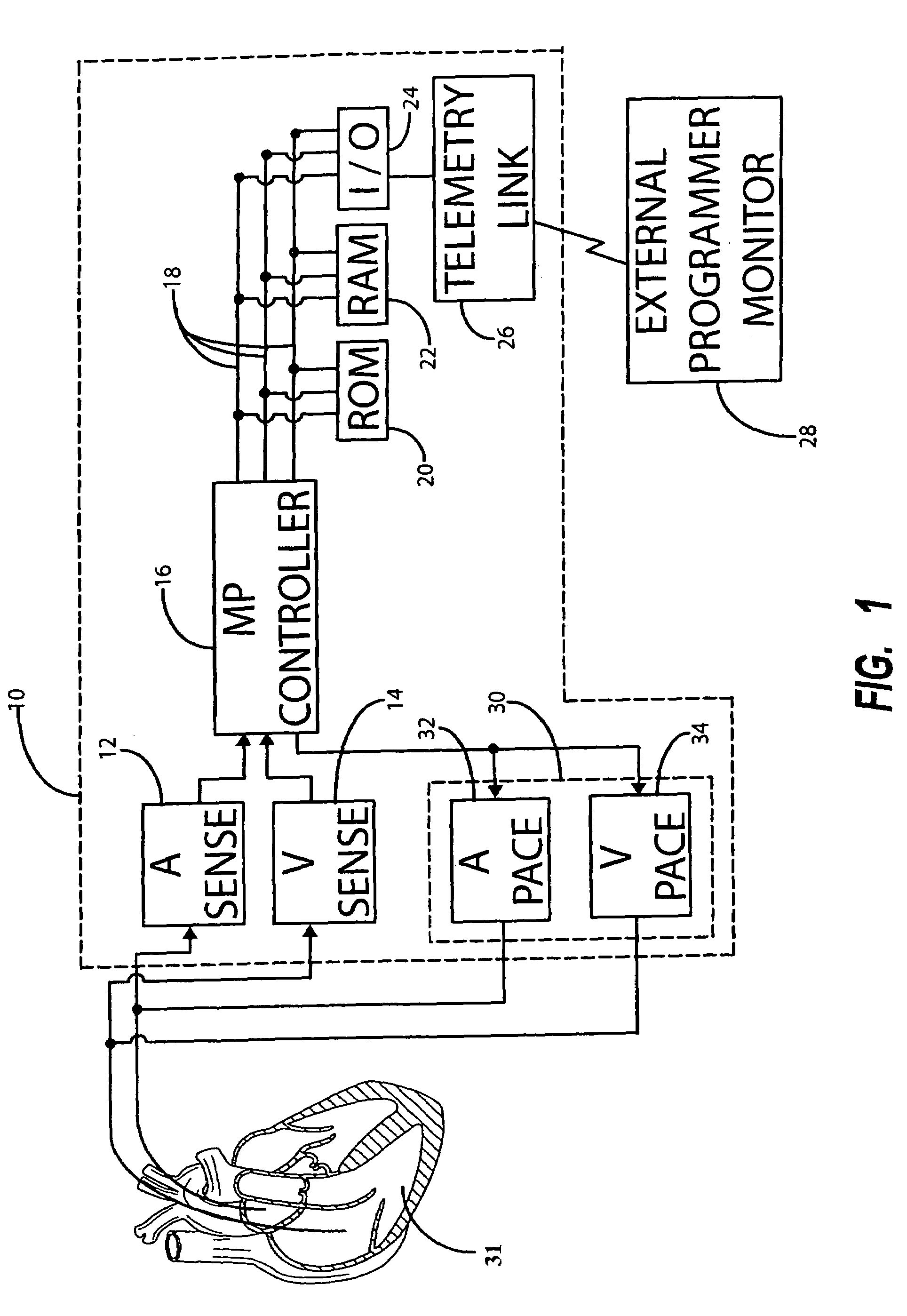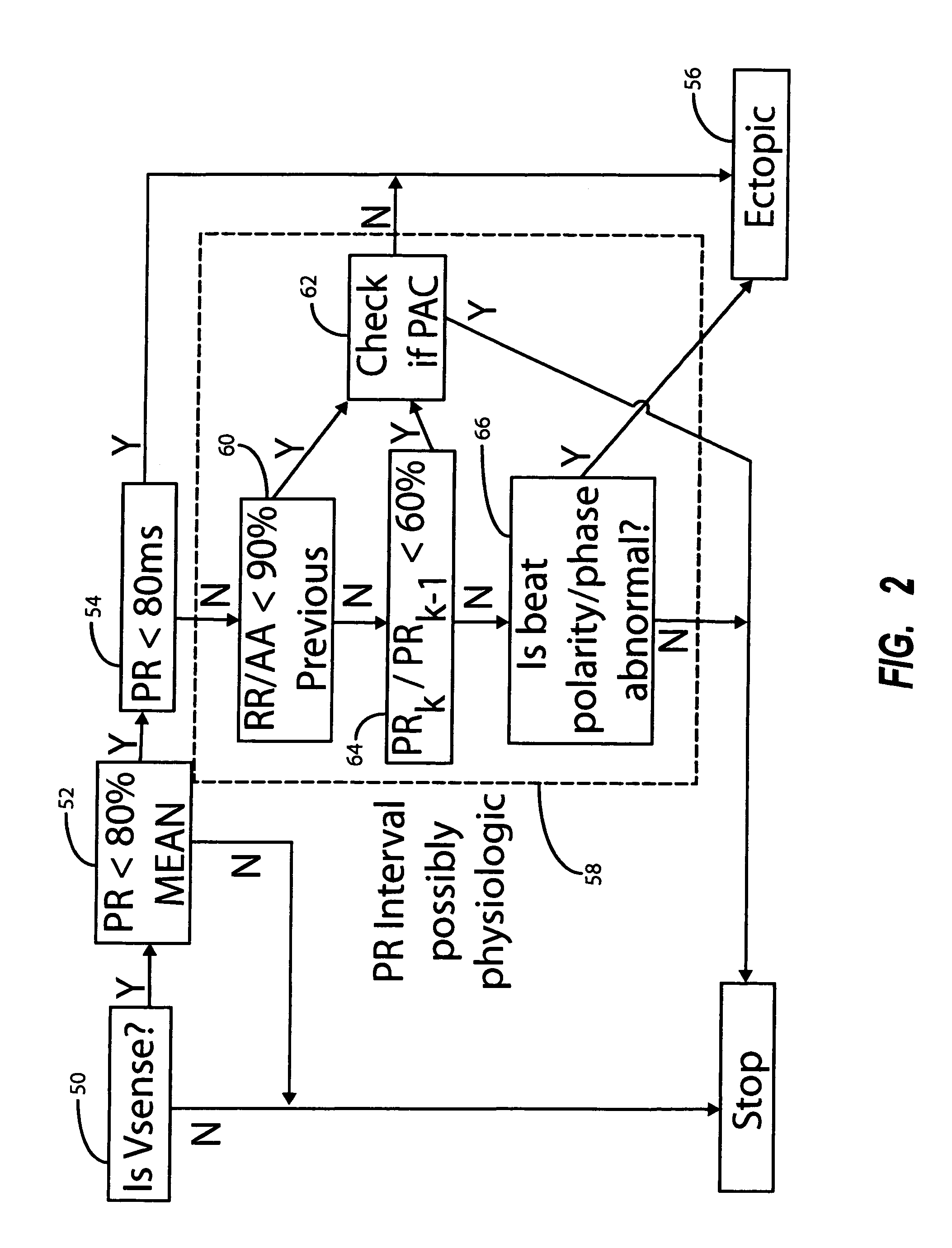Ectopic beat detection algorithm for implantable cardiac rhythm management device
a technology of cardiac rhythm management and detection algorithm, which is applied in the field of implantable cardiac rhythm management devices, can solve the problems of cardiac pacemakers, errors in diagnosis and/or treatment, and inappropriate indicators can be recorded on the device's stored electrogram, and achieve the effect of increasing the accuracy of the detection devi
- Summary
- Abstract
- Description
- Claims
- Application Information
AI Technical Summary
Benefits of technology
Problems solved by technology
Method used
Image
Examples
Embodiment Construction
[0014]Referring to FIG. 1, there is shown a logical block diagram of a conventional implantable cardiac rhythm management device which is shown as being enclosed by broken line box 10. The device 10 is adapted to be connected to a patient's heart by means of one or more medical leads. The device is depicted as a dual chamber pacemaker having a first sense amplifier 12 for detecting atrial depolarization signals (P-waves) and a ventricular sense amplifier 14 for detecting ventricular depolarization signals (R-waves). The output signals from the sense amplifiers 12 and 14 are applied as inputs to a microprocessor-based controller 16 which typically includes circuitry for converting analog outputs from the sense amplifiers 12 and 14 to digital values, all as is well known in the art.
[0015]The microprocessor-based controller includes a bus 18 for coupling it to a ROM memory 20 that typically stores a program of instructions executable by the microprocessor component in the microprocesso...
PUM
 Login to View More
Login to View More Abstract
Description
Claims
Application Information
 Login to View More
Login to View More - R&D
- Intellectual Property
- Life Sciences
- Materials
- Tech Scout
- Unparalleled Data Quality
- Higher Quality Content
- 60% Fewer Hallucinations
Browse by: Latest US Patents, China's latest patents, Technical Efficacy Thesaurus, Application Domain, Technology Topic, Popular Technical Reports.
© 2025 PatSnap. All rights reserved.Legal|Privacy policy|Modern Slavery Act Transparency Statement|Sitemap|About US| Contact US: help@patsnap.com



